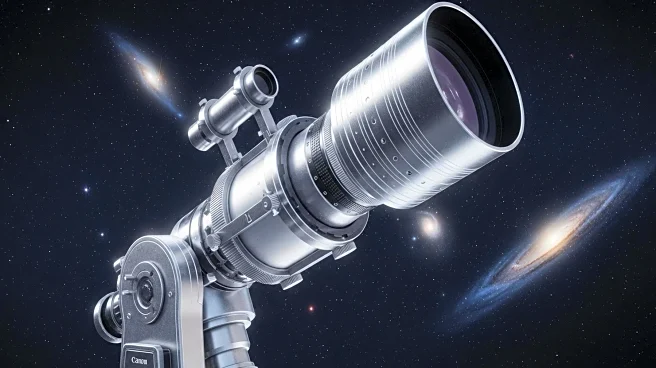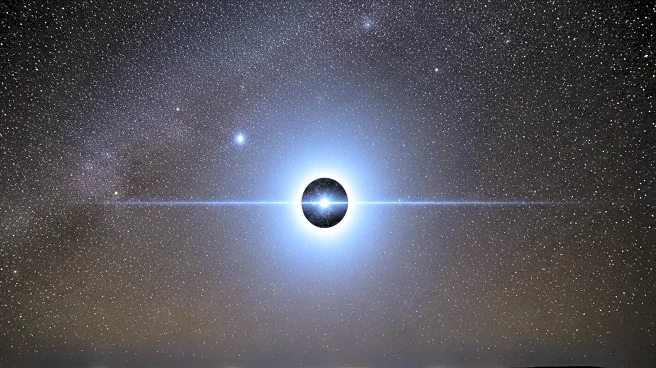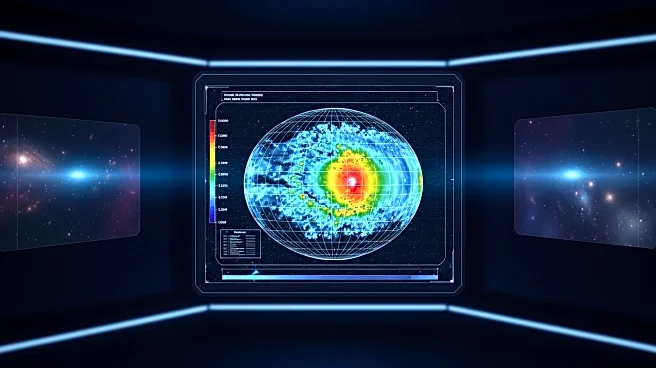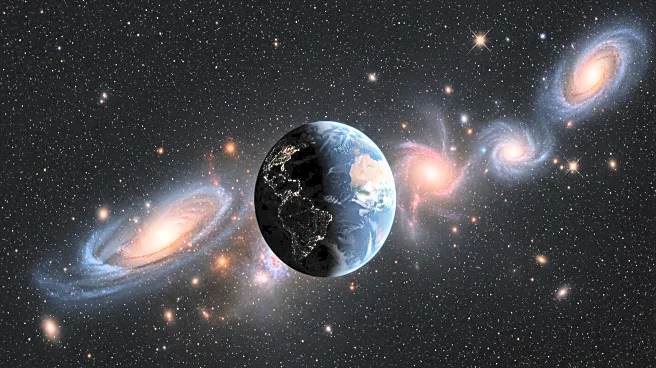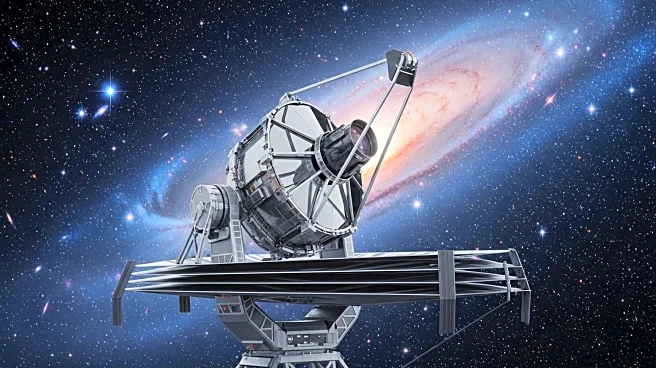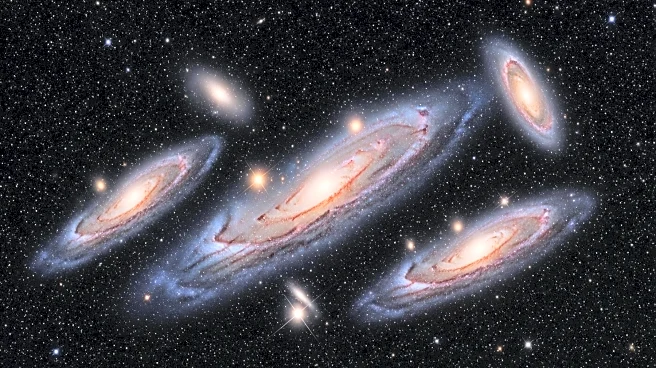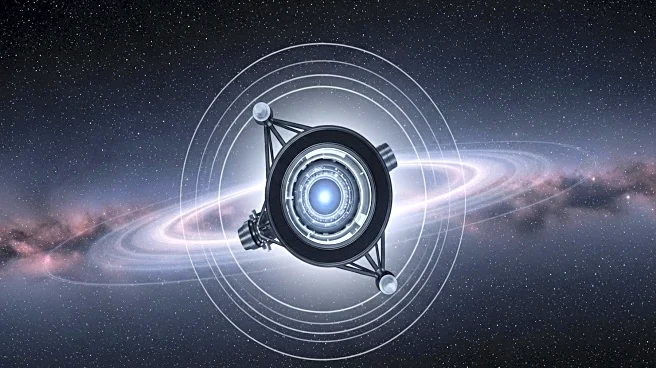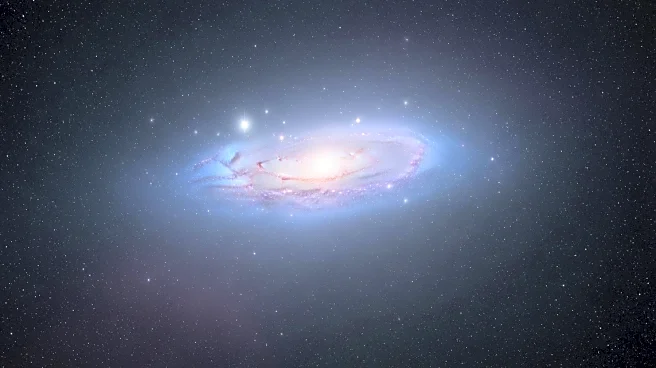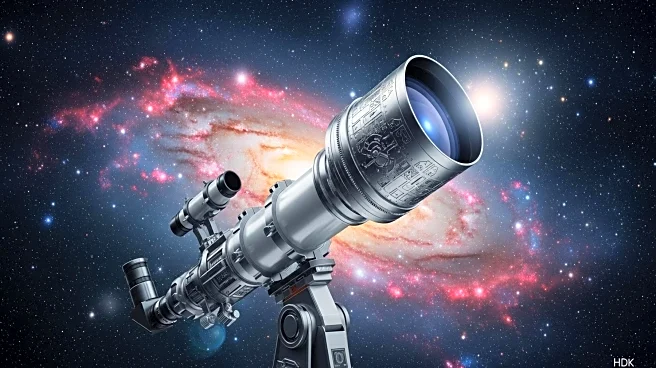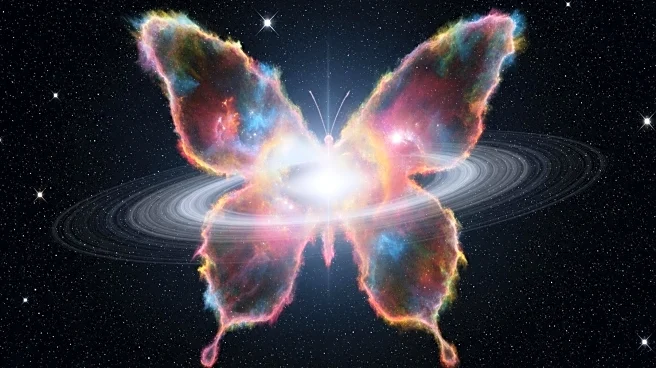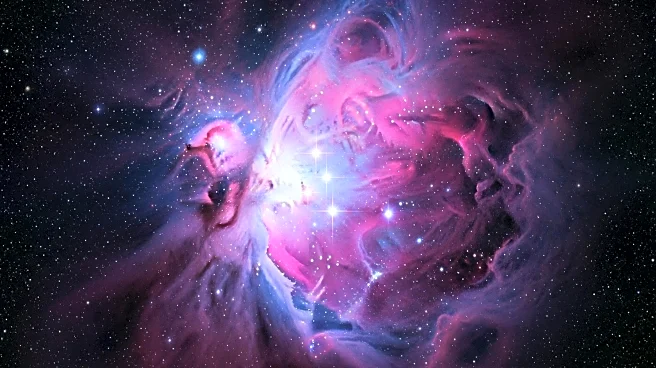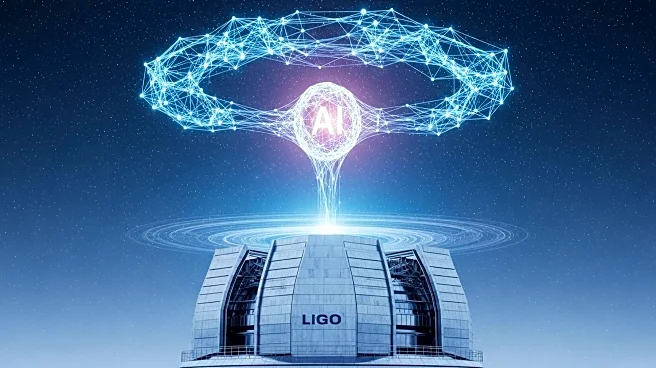What is the story about?
What's Happening?
New research suggests that the James Webb Space Telescope (JWST), Euclid, and the upcoming Nancy Grace Roman Space Telescope could form a powerful team to search for supermassive black holes from the early universe. These telescopes aim to detect black holes with masses millions or billions of times that of the sun, potentially formed less than 270 million years after the Big Bang. The discovery of such early black holes would challenge existing models of cosmic evolution and provide insights into the formation of these massive cosmic structures.
Why It's Important?
The ability to detect supermassive black holes from the dawn of time would revolutionize our understanding of cosmic evolution and the processes that lead to the formation of these massive structures. Current models suggest that supermassive black holes take at least a billion years to form, so finding them earlier would imply alternative formation scenarios, such as the direct collapse of gas and dust. This research highlights the potential of combining the capabilities of multiple space telescopes to explore the early universe and uncover the mysteries of black hole formation.
AI Generated Content
Do you find this article useful?
